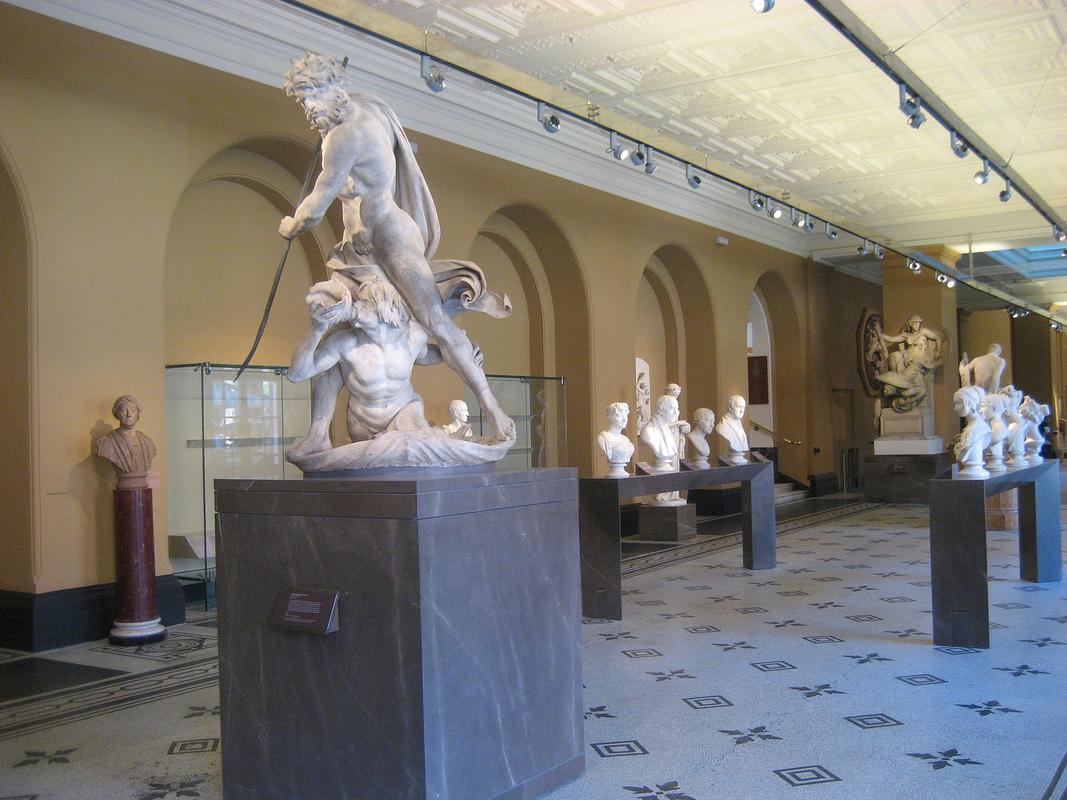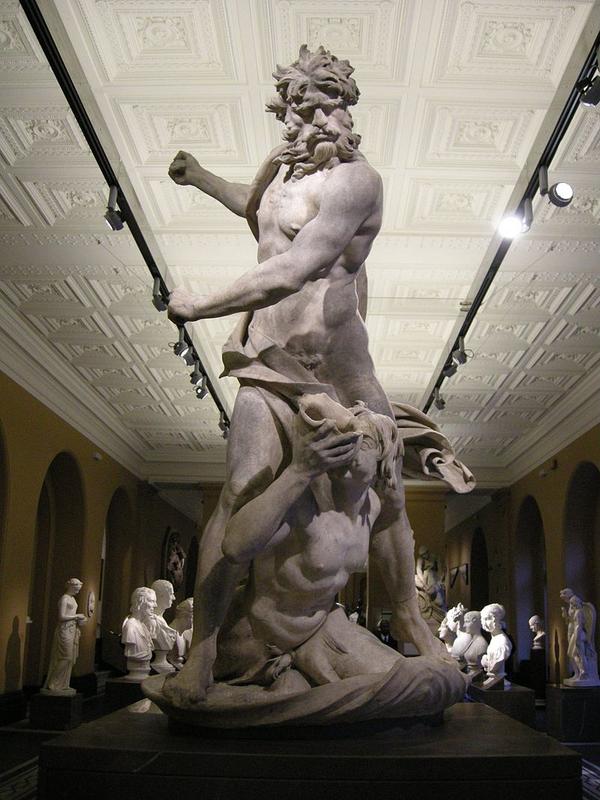More about Neptune and Triton
- All
- Info
- Shop

Contributor
Neptune and Triton by Bernini is a Kodak moment between father and son that ordinary humans could never dream of.
This is probably because they are gods and rule the earth and ocean and the closest we get to a throne is a porcelain one. Anyway, Neptune in the sculpture is a regulation DILF. Like a true god, Neptune is ripped in places the we didn’t know one could be ripped and has just about the most magnificent beard that we’ve ever seen. It’s really very convenient when you control the wind and can make it blow your full head of luscious locks (beard included) out of your face just enough to show off your strong jawline and fierce scowl that says he’s about to f$%^ sh*t up in the ocean. Bernini was really good at showing off movement in his sculptures. Movement, and also abs. Though Neptune has a smokin’ hot bod and is definitely the focal point of this sculpture, Triton is not to be ignored. He, too, has great abs and beautiful hair. He is blowing his conch to alert the four corners of the world that his dad is about to make waves… literally. The two of them together make up quite the display of manliness and the power of the gods.
The original piece was commissioned for Cardinal Alessandro Peretti Montalto, the nephew of Pope Sixtus V, to decorate his pool at Villa alle Terme, which was inherited from the Pope. Though this piece might have been the teeniest bit dramatic for a poolside statue, you have to applaud the ambition of the Cardinal. He must have been very serious about his aquatics. The piece, which bears the arms (literal arms, not coat of arms) of Cardinal Montalto, is thought to have been made before 1623, the year of the Cardinal’s death. Bernini was just 25 years old at the time. In 1786, Thomas Jenkins, an English art dealer, bought Neptune and Triton along with a number of other statues. Jenkins sold it to the artist, Sir Joshua Reynolds for 700 guineas. Reynolds wrote his intentions with the statue: “I buy it upon speculation and hope to sell it for a thousand.” He did not sell it for a thousand. The executors of Reynolds’ estate sold it to Lord Yarborough when he died in 1792. It remained in the Yarborough family until 1950, when it caught the eye of the Victoria and Albert Museum and was purchased with the help of the National Art-Collections Fund.
Neptune and Triton is six feet of pure marble, and as such is very heavy… 1857 lbs to be exact. As such a heavy object, moving it is rather complicated, though this hasn’t stopped V&A from doing whatever TF they want. They have moved it throughout the museum several times over the years, each time a painstaking process involving padded hydraulic wedges, pallets, and a forklift. But in each new home of Neptune and Triton, it manages to inspire wonder in the hearts of all.
Sources
- "Neptune And Triton | Bernini, Gian Lorenzo | V&A Search The Collections." Collections.vam.ac.uk. Web. 20 Feb. 2018.
- 'Neptune And Triton' By Gianlorenzo Bernini - Victoria And Albert Museum." Vam.ac.uk. Web. 20 Feb. 2018.
- "TRITON - Greek Sea-God Of Waves & Calm Seas, Herald Of Poseidon." Theoi.com. Web. 20 Feb. 2018.
Featured Content
Here is what Wikipedia says about Neptune and Triton
Neptune and Triton is an early sculpture by the Italian artist Gian Lorenzo Bernini. It is housed in the Victoria and Albert Museum of London and was executed c. 1622–1623. Carved from marble, it stands 182.2 cm (71.7 in) in height.
Check out the full Wikipedia article about Neptune and Triton















